The Lineage of Paithani Sarees: Untold Tales Of The Maharashtrian Drape
India shares a unique bond with handloom, spanning over centuries, with priceless weaves conserved and passed on from mothers to their daughters as an invaluable handloom. Paithani leads the roster.
Decoding the most favoured drape of Maharashtrian brides, in all its glory and nature-inspired motifs, Paithani is a legacy for Indians. Its cultural connotation rests in the kaleidoscopic colours of each masterpiece.
The History of Paithani Indian Saree
The Paithani saree originated in the antiquity of a medieval town called Paithan, close to Aurangabad. This Indian sari derived its name from the town.
The locally made sari had the finest threads of silk from China spun with pure zari. This silk saree is the result of years of mastery and finesse of handloom in India. Each piece features extravagant and generous gold usage with bird-inspired and floral motifs.
The contemporary iterations of this drape from Yeol and Paithan are now created from homegrown threads of silk from Bangalore. The zari, however, comes from Surat.
A pure six-yard Paithani sari is crafted using 500 grams of luxurious silk threads and 250 grams of genuine zari threads. However, the nine-yard pieces require added raw materials. A nine-yard Paithani silk saree could weigh much as 900 grams.
Paithani Saree & Motifs Love Affair
The radiant weave joyfully intermingles different hues to create a subtle illusion of flowing colours. Traditionally, motifs include peacocks, parrots, and lotuses. However, the era of the Peshwas popularized the Asawalli, Ashraffi, and Hans motif.
The pallu almost always consisted of Muniya, a typical parrot woven in green, hugging the borders, with a creative dash of red at its mouth. Pallus were also designed with a Panja – a classical geometrical floral motif, usually bordered in red. The Barwa on the pallus consisted of twelve ladder strands with three strands on the sizes, and a traditional Mor, or peacock.
The Evolution of The Indian Textile, From Cotton to Silk
Over the decades, the Paithani Saree has evolved in many ways. From a basic cotton base to a luxurious silk base, the textile has come a long way. Earlier, silk was only used in the weft designs and borders, whilst the cotton body was the norm. However, the modern versions of Paithani sarees are not made from cotton anymore.
When it comes to the design of Paithani, besides minutiae of designs and revival of conventional complex patterns, the greatest transformation is that Indian weavers graduated from the fine borders to ones that are more magnificent. As a result, the silhouette of Paithani also changed to accommodate an array of motifs, which includes themes from other provinces.
After working with the maestros for years and plugging its flaws, the modern-day Paithani colour scheme is alluring. Of late, experimental colour arrangements intertwine shades of chocolate brown and violet wrapped in golden zari weft with pink roses. Weaving such incredible fabric is an innovative journey. The saga behind each Paithani creation is exemplary.
Significance Of Paithani Saree For Brides
Paithani sarees play a central part in the Maharashtrian culture. Also called the “Queen of Sarees,” Paithani is to Maharashtra as Kanchipuram Silk is to Tamil Nadu. Needless to add, Maharashtrian women must wear this drape for any auspicious occasions, weddings, and festivities. Paithani weaves resemble the ‘gara’ embroidery, which does not leave threads hanging. Threads are sealed neatly to ensure it does not entangle with the accessories, which is a great relief for brides.
Over the years, the heritage weave received a modern update as brides find better ways to embrace their origins. Most brides prefer to tuck the pleats and drape the yardage around their neck. Other innovative ways of styling this saree include swapping the traditional blouse with a white shirt or a contemporary jacket, matching tank tops, or even contrasting T-shirts for pre-wedding festivities.
To channel that majestic elegance of fore, signature drapes paired with a long jacket-like blouse are recommended. Brides may also drape their Indian sari as a gown, suggestive of Suniti Devi’s (Maharani of Cooch Bihar) style.
Time & Process Involved In Weaving A Paithani Saree
The weave’s accuracy depends on the loom and its authenticity. The timeline of producing a sari depends on the measured and thorough harmonization of limbs, and an eye to design a beautiful, free-flowing, handmade six-yard drape.
Producing the finest of Paithani Silk Saree can take between 6 months to 2 years. A lot depends on the intricacies of design. The fabric of the sari body does not bear added weft-forming figures. Today, the weave of figuring depends on the tapestry technique, and three key weaving techniques called the interlocking method, dovetailing method, and split tapestry weave.
Real vs Fake Paithani Saree
One of the most distinctive characteristics of Paithani Silk Saree is that this saree looks similar from both sides. This is one invaluable way to distinguish between power loom Paithani and other imitation sarees available in the market. Find popular colours of designer sarees like red, sky blue, yellow, green, magenta, purple, and peach-pink. Traditional motifs of the Narali, or coconut, bordering the saree with pankha (fan shapes) is a trademark.
Caring for Paithani Saree
To ensure your precious possession lasts long, spread the drape in a cool and dry place. Allow it to breathe. If you did not wear the saree for long, follow this method regularly.
Do not put the saree out in direct sunlight. Likewise, do not keep it inside the closet, in a dark place, for too long. Once aired, change the saree folds evenly, place it inside a muslin cloth, and store it in a dresser or wooden chest.
If you take out the piece after a very long time, make sure to dry iron it first. Iron from the reverse side.
With these little details, you would treasure a meticulously crafted Paithani silk saree, the timeless masterpieces for connoisseurs.


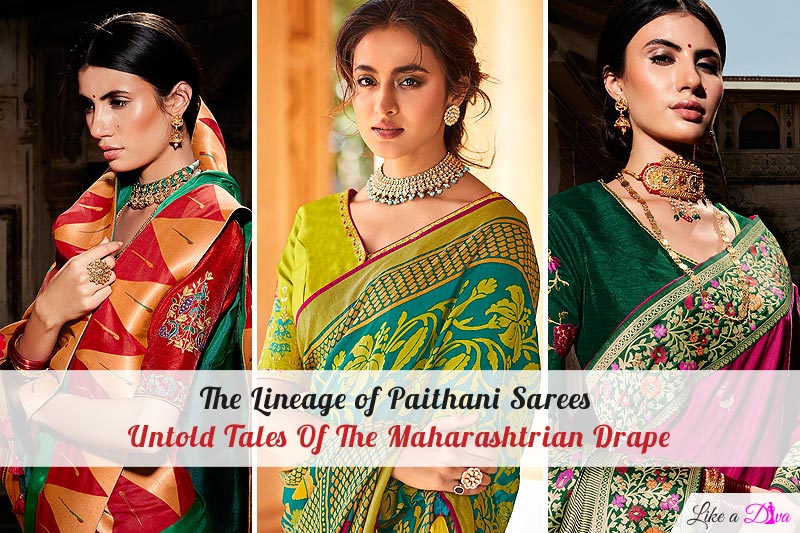
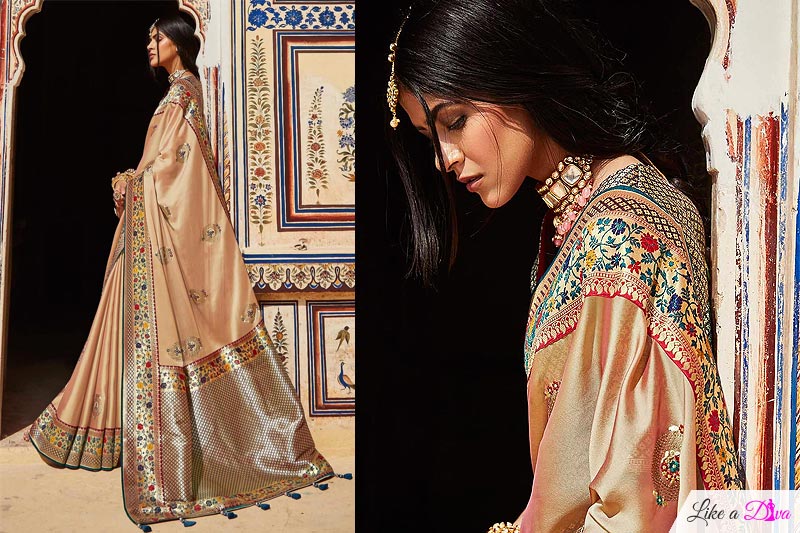
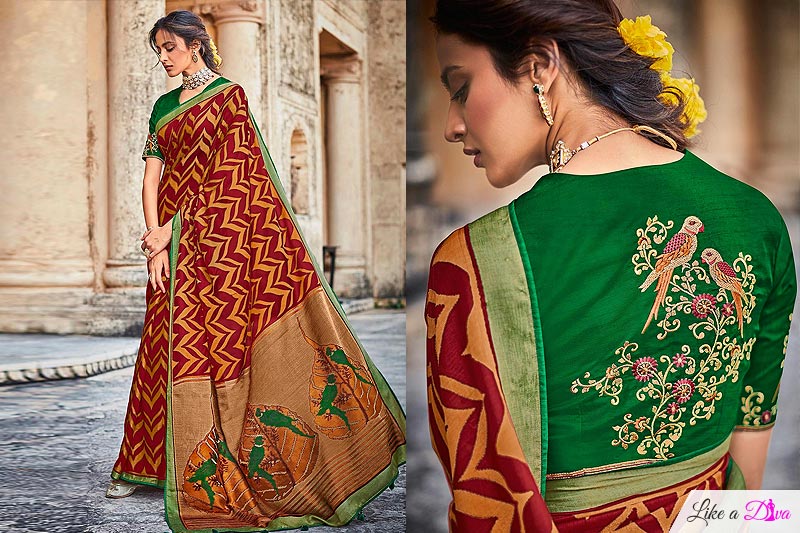
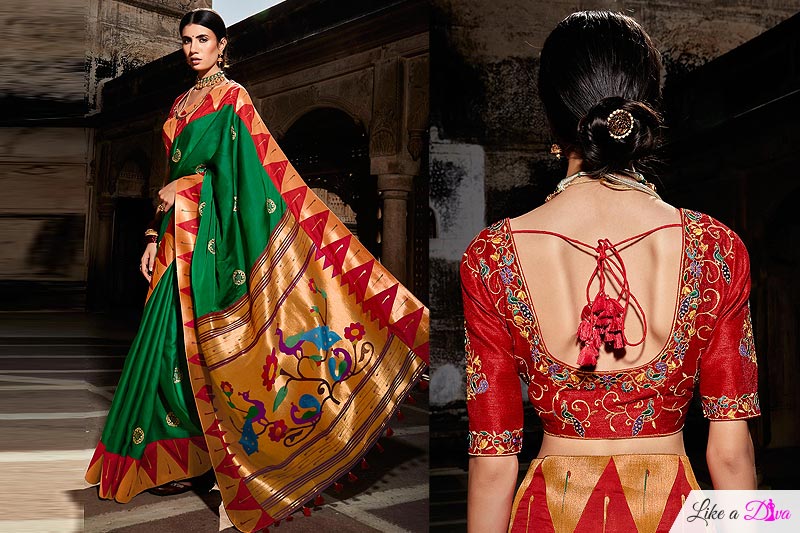
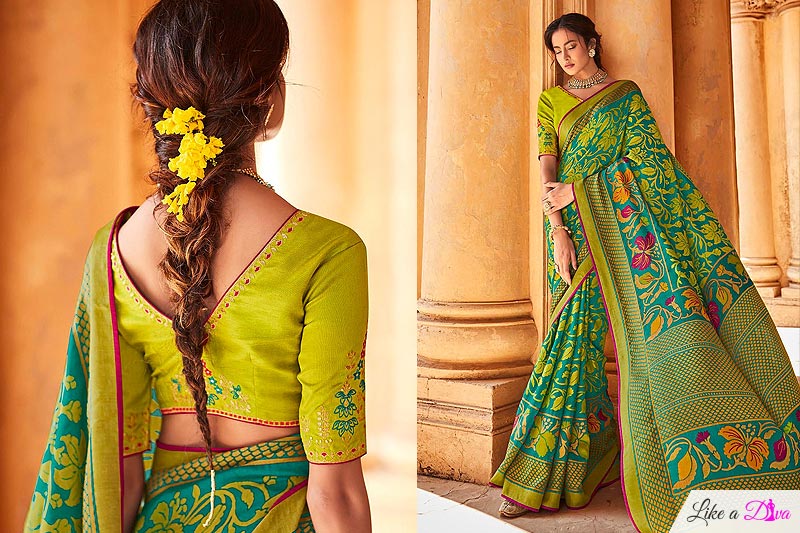
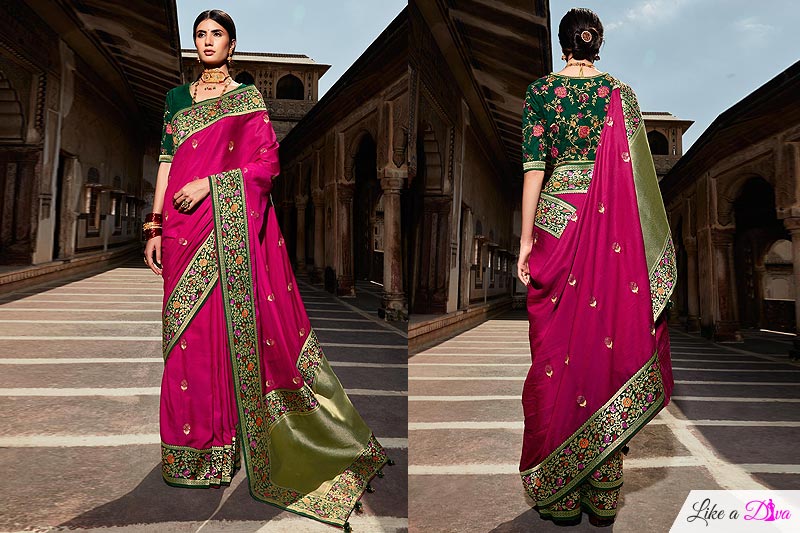
.jpg)
Leave a Reply